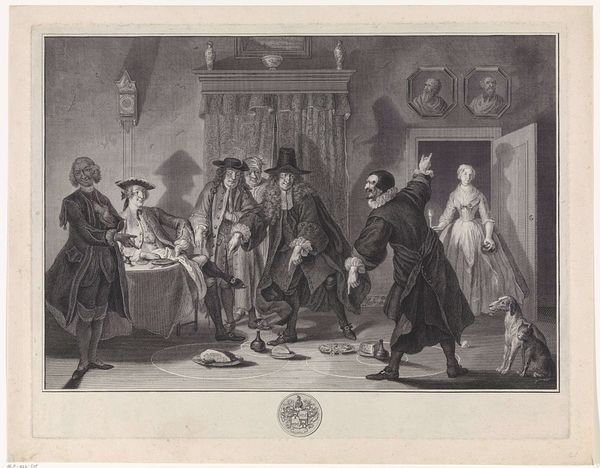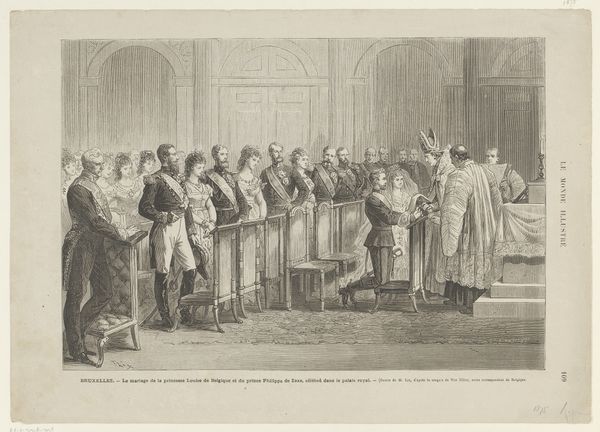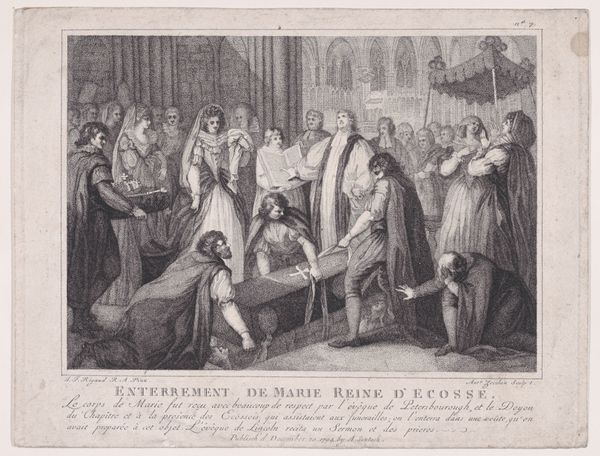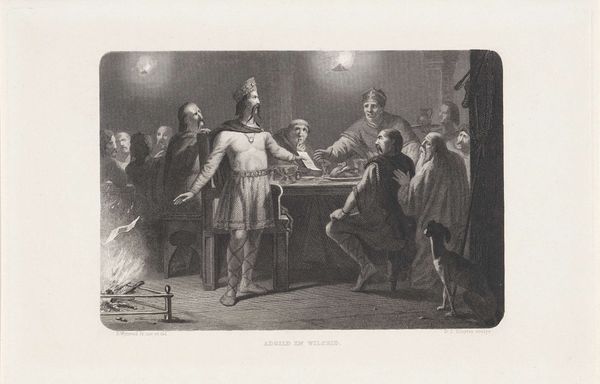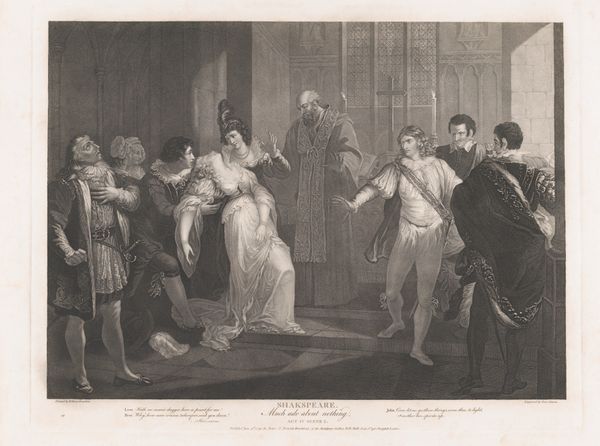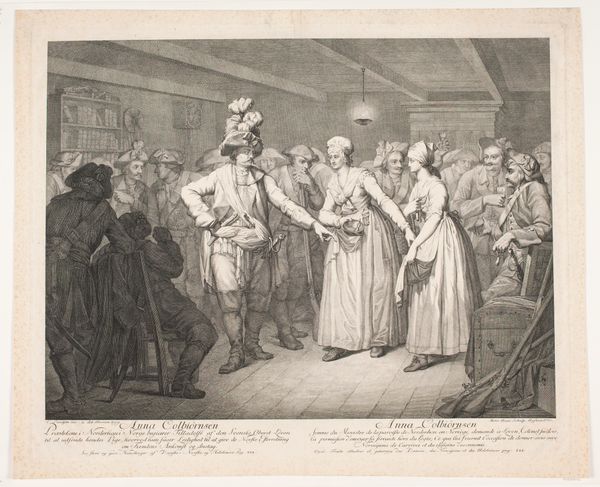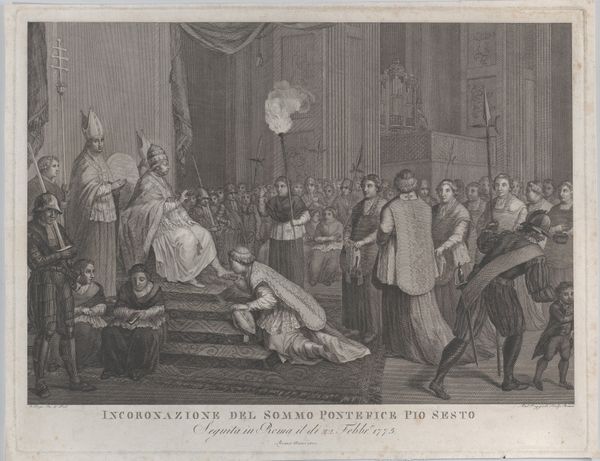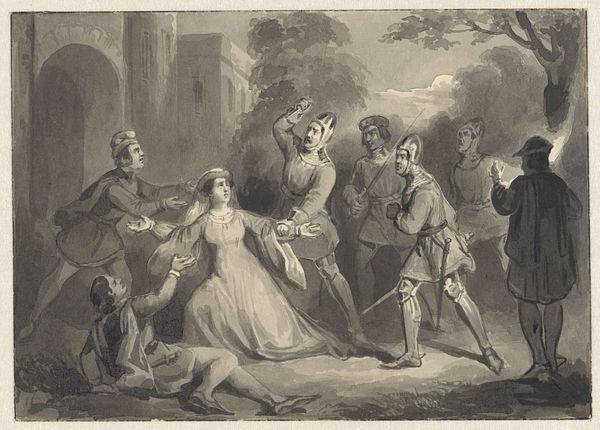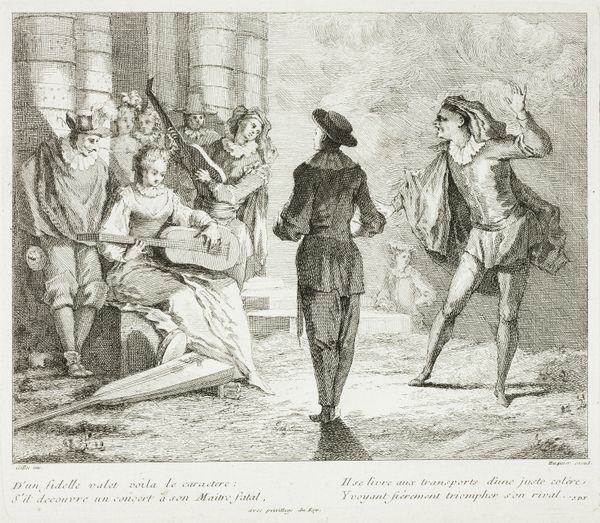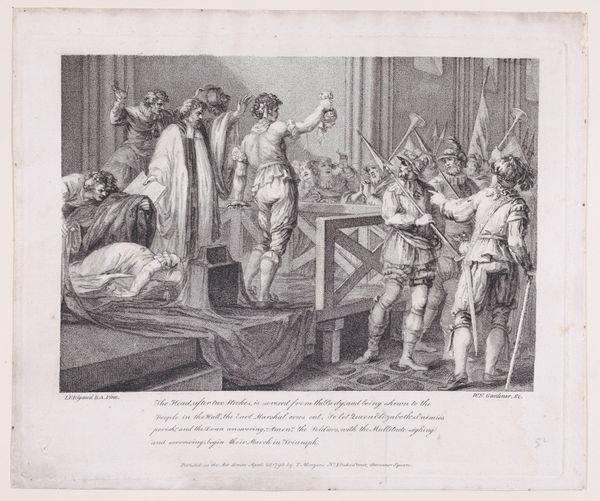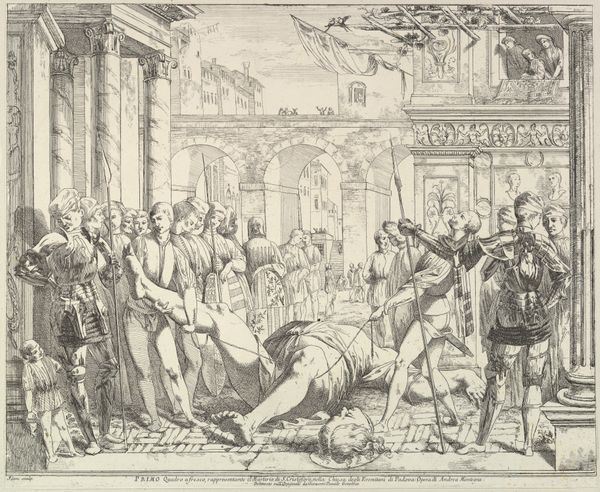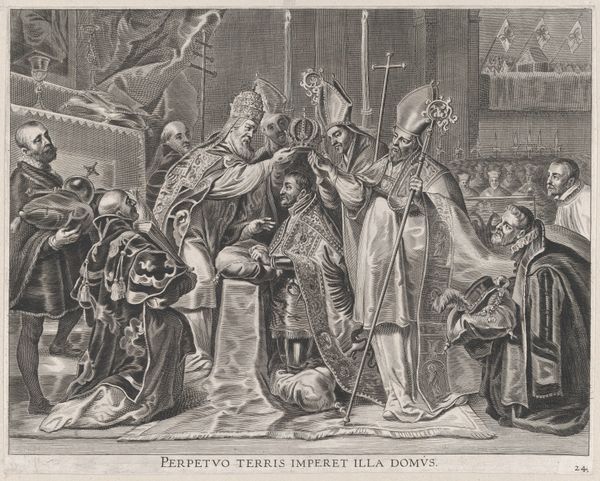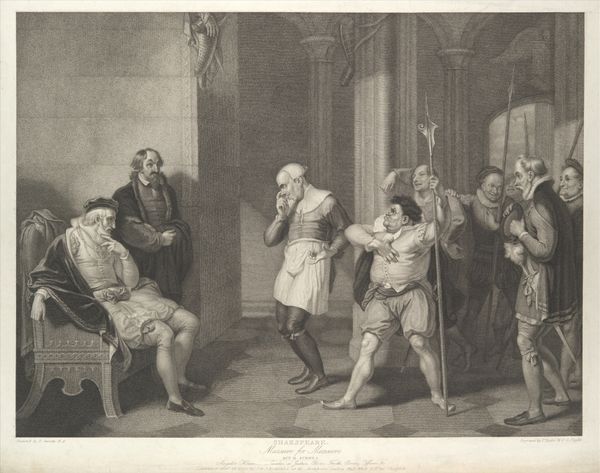
Hertog Willem verbindt zich met de Hollandse edelen en steden 1843
0:00
0:00
johannwilhelmikaiser
Rijksmuseum
drawing, watercolor
#
drawing
#
narrative-art
#
watercolor
#
romanticism
#
watercolour illustration
#
genre-painting
#
history-painting
Dimensions: height 135 mm, width 174 mm
Copyright: Rijks Museum: Open Domain
Editor: Here we have "Hertog Willem verbindt zich met de Hollandse edelen en steden," a watercolor and ink drawing made in 1843 by Johann Wilhelm Kaiser. It depicts a very theatrical scene. It’s quite muted in tone, with almost everything in shades of grey and brown, and yet the composition seems so dynamic. What stands out to you? Curator: Indeed, the restricted palette encourages a formal analysis. Note the artist’s emphasis on line. See how the linearity dominates, defining form and contour? How would you describe the orthogonals, receding into the picture plane? Editor: Well, they definitely create a sense of depth. The figures appear to be arranged in a receding space, emphasized by the architecture in the background. Curator: Precisely. Observe the artist's meticulous rendering of details: the intricate folds of the garments, the varied postures, all contributing to the dynamic visual rhythm. Does the limited colour range unify the composition? Editor: I think so. It definitely draws attention to the lines and shapes, because nothing else really stands out, hue-wise. Without the grayscale, maybe the expressions and gestures of the people in the work wouldn't stand out as much. It unifies everything. Curator: Correct. The narrative, though present, remains secondary to the formal arrangements of line, shape, and the carefully controlled tonal range. The aesthetic power emerges from these intrinsic pictorial elements. It almost renders it symbolic. Editor: It’s amazing how much you can discover when you focus on the art itself! Curator: Yes, by investigating the intrinsic elements, one uncovers its artistic value.
Comments
No comments
Be the first to comment and join the conversation on the ultimate creative platform.
